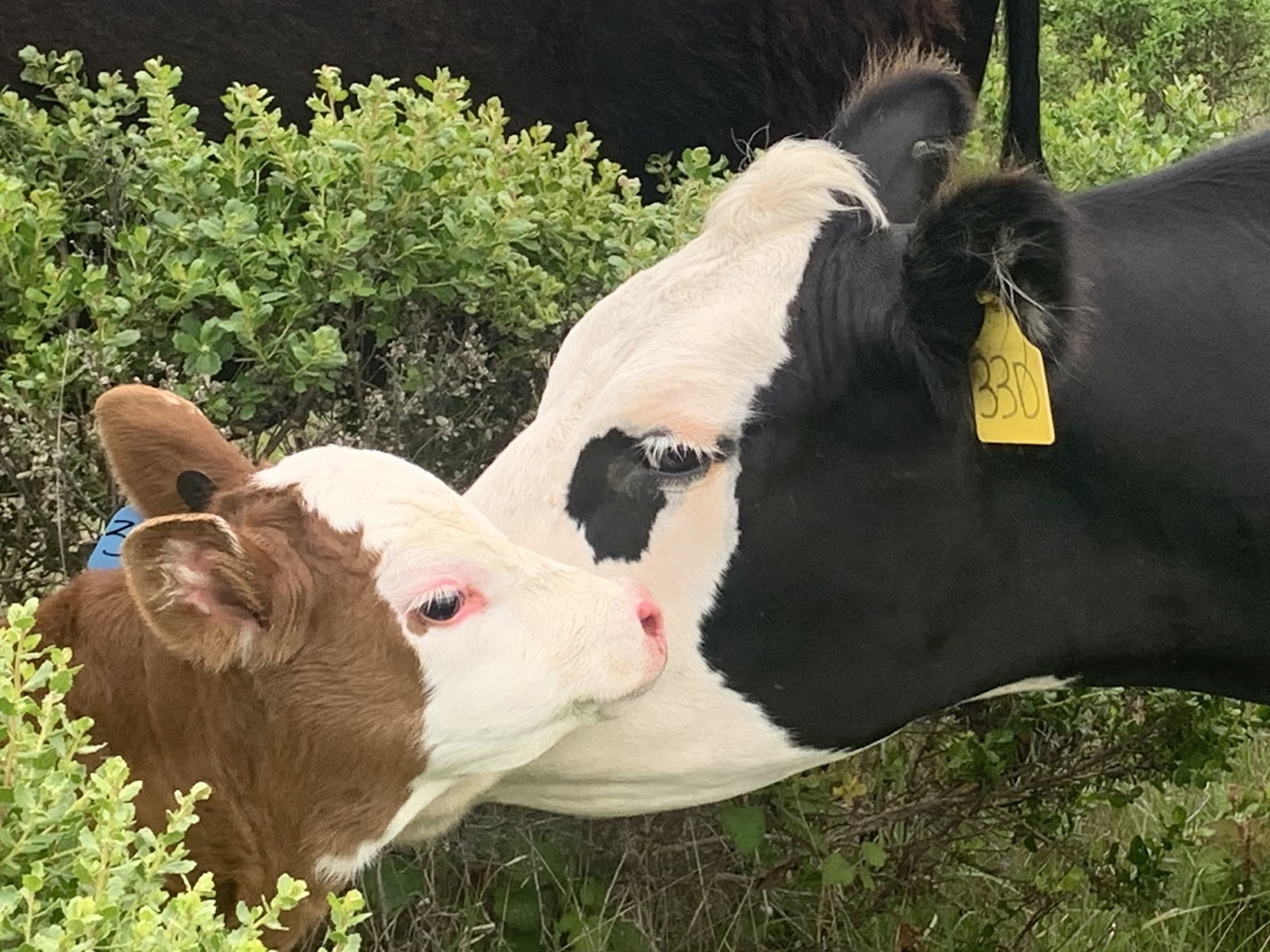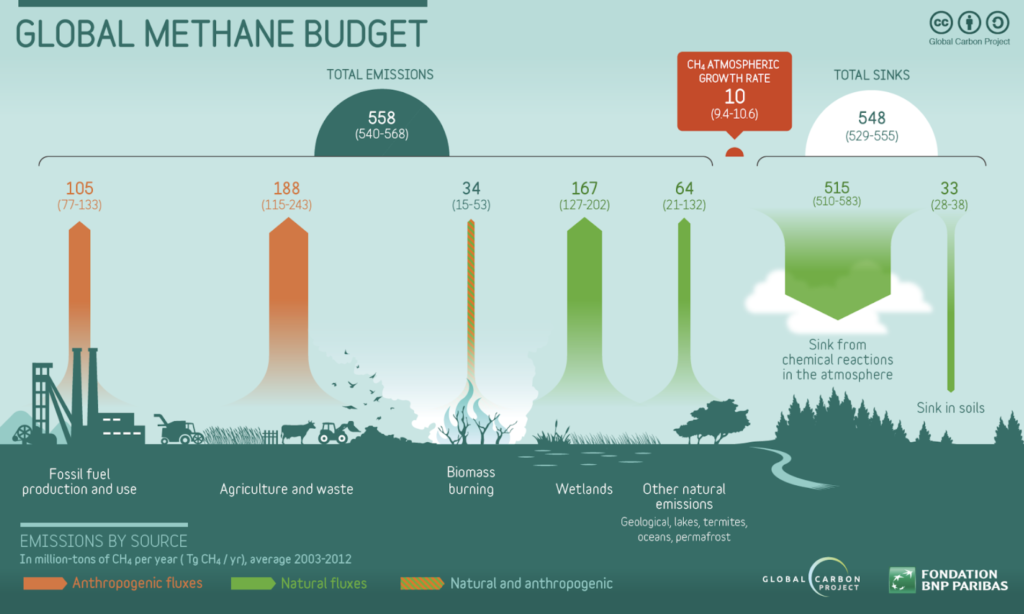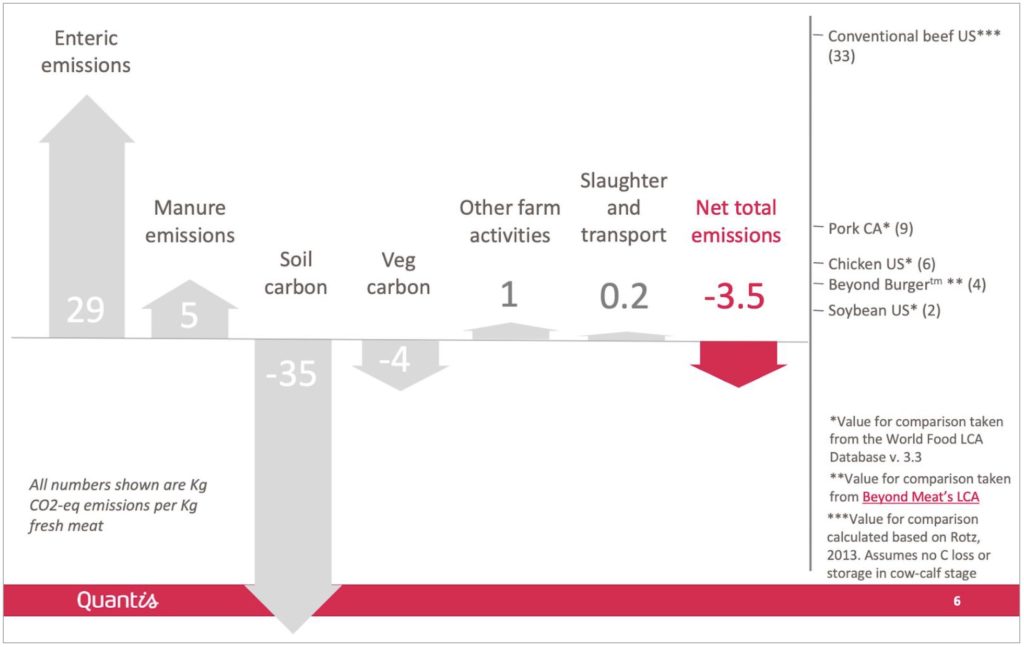What We’re Reading – Point Blue Issue Brief: Methane Emissions from Livestock

By: Kevin Alexander Watt
 Regenerative ranching strives to produce livestock in a way that creates the greatest net environmental, nutritional, economic, and social benefits. Promoting a stable climate is an increasingly important focus of regenerative management, and this month we’d like to highlight two great resources that have helped shape how we think about the impact of regenerative ranching on the global climate.
Regenerative ranching strives to produce livestock in a way that creates the greatest net environmental, nutritional, economic, and social benefits. Promoting a stable climate is an increasingly important focus of regenerative management, and this month we’d like to highlight two great resources that have helped shape how we think about the impact of regenerative ranching on the global climate.
Point Blue Issue Brief: Methane Emissions from Livestock
In 2019, Point Blue Conservation Science authored an Issue Brief on livestock methane emissions to review the existing science and frame the studies in a useful context for thinking about the relationship between methane and regenerative livestock management.
Methane is an important consideration for how regenerative management contributes to a stable climate. Methane is a potent greenhouse gas that has a potential global warming impact 28-84 times that of carbon dioxide1. Estimates predict that livestock produce 20-30% of global man-made methane emissions2 and some studies show that grass-fed cattle produce more methane than grain-fed animals per pound of beef produced3.

This difference in emissions between grass- and grain-fed cattle is significant and so it is important to understand where methane from livestock comes from in order to best manage it. The majority of methane from livestock comes naturally from the process of digestion and is emitted as burps4. The significant difference in emissions between grass- and grain-fed comes, in largest part, from the higher calorie, higher nutrient, diets fed to grain-fed cattle, often in confinement. These animals expend less energy moving to find food, fatten more quickly than cattle on grass-based diets and therefore lead shorter lives with fewer burps.
Some evidence suggests regenerative management can lower the total greenhouse gas impact of livestock by improving the health of vegetation and soil on the lands they graze. Soils that sequester atmospheric CO2 through adaptive planned grazing, compost application, and/or riparian restoration/planting can help lower the net greenhouse gas impact of livestock. Point Blue’s Issue Brief notes that “a number of recent life-cycle analyses show that increasing soil carbon of grass-fed beef operations can offset some (~15%) or even all of the enteric methane that is produced by livestock, depending on the magnitude and duration of carbon gain.”
To us, the most important takeaway from Point Blue’s report is that methane produced by livestock is one of many variables that needs to be considered on a ranch that strives to be regenerative. The myriad co-benefits of grass-based adaptively managed livestock, such as “food, soil health, biodiversity, and economic livelihoods for local communities” often far outweigh the costs of methane emissions. Additionally, many innovative products are emerging to help reduce livestock methane emissions (Mootral and Blue Ocean Barns), and we are excited to see how they can support a holistic and regenerative approach to raising livestock.
Carbon Footprint Evaluation of Regenerative Grazing at White Oak Pastures
The second resource we’d like to share this month is a lifecycle analysis (LCA) by Quantis that evaluated the net climate impact (including methane) of the regenerative livestock grazing operations at White Oak Pastures (WOP) in Bluffton, Georgia. This LCA was published soon after Point Blue’s Issue Brief and is significant as it begins to fill the research need highlighted in Point Blue’s Issue Brief for more LCAs to “consider soil carbon sequestration in different livestock production systems.”
WOP is a 3,000 acre family farm that has converted heavily degraded annual cropland to perennial pasture and used regenerative grazing with cattle, sheep, goats, hogs, poultry, and rabbits to restore the health of the land. Their 2019 LCA shows that WOP has been able to produce beef with a carbon footprint that is 111% lower than the conventional US beef production system through adaptive and regenerative management that improved soil carbon sequestration. Importantly, WOP is not just producing beef in a less climate harmful way, its production results in a net drawdown of greenhouse gassses. This means that their grass-fed beef production methods are more efficient in terms of climate emissions per pound of product than conventional beef, pork, chicken, and even soybean production systems.

The LCA’s authors note that while their analysis was rigorous, the reported results are not certainties. For example, they warn that the benefits of WOP’s management may be less beneficial than predicted if the carbon sequestered in their soils is lost because of future tillage or if the soils become unable to store more carbon. Additionally, they note that the climate impact per pound of beef produced may also be better than predicted if improvements in the land’s health increase per acre productivity or if estimations of livestock methane emissions were overestimated. Looking beyond Georgia, it is important to remember that WOP’s wetter, more mesic environment is more responsive to soil carbon sequestration than drier areas and therefore the magnitude of their results should not be expected everywhere. More research in diverse contexts is certainly needed.
Ultimately, like the Point Blue Issue Brief, the Quantis LCA highlights that the benefits of regenerative ranching go beyond climate stability. Regenerate ranching can provide improved water efficiency, reduced nutrient runoff from fertilizers and manure, reduced pesticide use, increased wildlife habitat, increased animal welfare, and revitalized rural economies.
Given the importance of all of these and other factors for the health of the planet and for people, we feel inspired by these reports to remember that the management decisions we make should not be limited to a single variable, but instead should consider the vast and interconnected systems that are impacted by how we steward the land.
2 Saunois, M., P. Bousquet, B. Poulter, A. Peregon, et al. 2016b. The global methane budget 2000-2012. Earth System Science Data 8:697-751
3 Pelletier, N., R. Pirog, and R. Rasmussen. 2010. Comparative life cycle environmental impacts of three beef production strategies in the Upper Midwestern United States. Agricultural Systems 103:380-389.
4 Saunois, M., P. Bousquet, B. Poulter, A. Peregon, et al. 2016b. The global methane budget 2000-2012. Earth System Science Data 8:697-751.